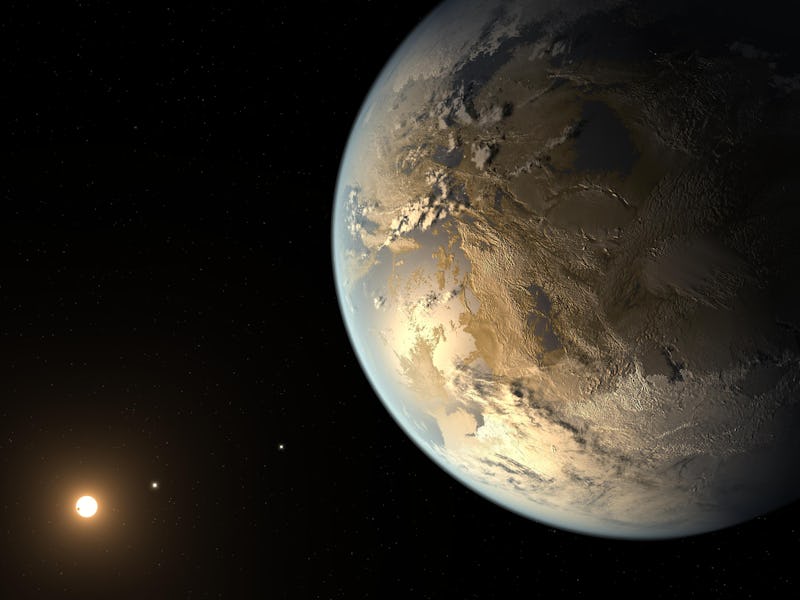Astronomers and geoscientists have teamed up to try to answer the question, ‘What makes a planet Earth-like’? Researchers used data from the Sloan Digital Sky Survey (SDSS) to determine that a planet’s composition — and therefore how similar it is to the Earth — is determined by the mix of elements in its host star.
The results were presented today at the American Astronomical Society (AAS) meeting in Grapevine, Texas, where astronomer Johanna Teske explained that the study combines new observations of stars with models of planetary interiors.
Thanks to NASA’s Kepler Space Telescope, Earth-sized planets have been found orbiting many stars — but it’s important to note that because a planet is labeled “Earth-sized” does not necessarily mean it is Earth-like. Many of these the Earth-sized planets discovered so far orbit stars with vastly different chemical compositions than our sun, and that is a big deal.
According to Teske, a planet’s composition is determined by the chemical makeup of its host star. Take for example, Kepler 102, and Kepler 407. Both systems have Earth-sized planets but those planets could be very different from Earth.
Kepler 102 is slightly less luminous than our sun, and is known to have five planets in orbit around it. Kepler 407, on the other hand, is a star almost identical in mass to the Sun and hosts at least two planets, one of which has a mass less than 3 Earth masses.
After analyzing their chemical fingerprint, known as a spectra, the researchers determined that Kepler 102 is a lot like the sun, whereas Kepler 407 has a higher concentration of silicon.
The researchers took the star compositions and combined them with geophysical models to estimate that ‘Janet’, a theoretical planet around Kepler 407, would likely have an abundance of garnet due to the higher concentration of silicon in its host star. However, Kepler 102 would likely spawn a planet rich in olivine, a mineral we see on Earth.
Unlike olivine, garnet is a much stiffer mineral, and doesn’t flow as easily. This has major implications for sustained geological processes such as plate tectonics — a process believed to be essential to life as we currently known it. Volcanoes and ocean ridges constantly recycle materials between the Earth’s crust and mantle, which in turn helps regulate the atmosphere.
Artist rendition of the interior compositions of planets around the stars Kepler 102 and Kepler 407.
Sloan Digital Sky Survey astronomers used the APOGEE (Apache Point Observatory Galactic Evolution Experiment) spectrograph on the 2.5m Sloan Foundation Telescope in New Mexico to make these observations. The team focused on ninety Kepler stars that had evidence of hosting at rocky, potentially Earth-like planets.
